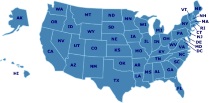Literature Based Curricula
All learning does not need to come through a textbook. In fact, using the world of books, especially "living books," will excite interest in your childen, will bring history alive, and can awaken them to new perspectives and ways of learning.
Resources
Five in a Row
Five in a Row provides a step-by-step, instructional guide using outstanding children's literature for children ages 4-8. Unit studies are built around each chosen book. There is a series for preschoolers called "Before Five in a Row," along with other volumes for older children.
A History of Science
A History of Science is not a textbook, but is a guide to help parents and children study science through literature. It is intended for children in elementary grades.
Total Language Plus
Total Language Plus is an innovative curriculum focused on teaching thinking and communication skills using literature as a base. The authors believe an integrated system is more efficient than a fragmented approach, discovery style learning is the most effective and learning should be enjoyable. The "discover, do, drill" method is employed throughout the TLP program with activities focusing on thinking skills. These comprehensive novel studies cover spelling, grammar, punctuation, vocabulary, analytical and critical thinking, comprehension, writing, listening, and field trips and projects.
Beautiful Feet Books
Beautiful Feet Books publishes Rea Berg's "History Through Literature" study guides. They offer fine children's literature, including the D'Aulaire biographies and Genevieve Foster's "World" titles. This is a great resource for anyone wishing to utilize an approach that studies history through literature.
Featured Resources
As an Amazon Associate, we earn from qualifying purchases. We get commissions for purchases made through links on this site.
Beautiful Feet Books
Beautiful Feet Books publishes Rea Berg's "History Through Literature" study guides. They offer fine children's literature, including the D'Aulaire biographies and Genevieve Foster's "World" titles. This is a great resource for anyone wishing to utilize an approach that studies history through literature.
The Complete Home Learning Source Book : The Essential Resource Guide for Homeschoolers, Parents, and Educators Covering Every Subject from Arithmetic to Zoology
This ambitious reference guide lives up to its name. Practically three inches thick--and we're not talking large print here--it's packed with titles, ordering information, and Web site addresses. From where to send away for a kit to make your own Chilean rain stick to how to order a set of Elizabethan costume paper dolls, the book connects families to a world of learning possibilities. Book titles, short synopses, authors' names, publishers, and years of print make up the bulk of the guide. Clas...
The National Parks of America
For tourists, family campers, and serious lovers of the outdoors, here is a big, beautiful, color-illustrated book that describes more than 50 national parks, sites, and seashores that stretch from Cape Hatteras on the Atlantic coast to the Grand Canyon in Arizona, Yosemite in California, Haleakala in Hawaii, and Glacier Bay in Alaska. More than 400 breathtaking photographs capture the beauty and atmosphere of each site, and 54 color maps show each park's location and major features. Visitor inf...
Kids' Poems (Grades 1)
Regie Routman shares her delightful selection of free verse poems written by first graders that will inspire your second graders to think, I can write poems like this too! Regie provides strategies for using kids' poems as models to guide children to write poems about things they know and care about: learning to skate, disliking asparagus, playing with a best friend, and more. She describes the way she invites children to study the model poem, beginning by asking kids, What do you notice? She sh...
Freedom and Beyond (Innovators in Education)
John Holt looks at the role that schooling in society plays in education.




